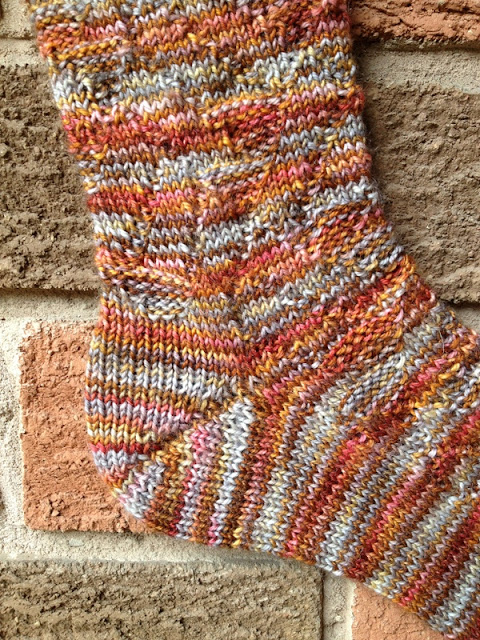Donna and I spent a delightful day yesterday hand-painting yarn out on my covered deck. It was a warm day but there was enough of a breeze to keep things pleasant.

After laying the water-soaked skein down on a couple of strips of plastic wrap we began painting our yarn. My goal with this skein was to do dark and light purple and dark and light lilac. To get the lighter shades, just dilute the dye with water.
Once the skein was completely painted including the other side and ensuring the dye went right through so there are no white spots, it is rolled up long-ways and then rolled up like a jelly roll and popped into a Ziploc bag to go into the steamer. On the Ziploc bag, we wrote the time it was to go in the steamer (it needs to steam an hour to heat-set the dye) as well as what dyes we used.
I didn't get a photo but I have a big stock pot dedicated to dyeing. I put three cleaned cat food tins in the bottom and then a rack on top of them. I put water in the bottom to just below the rack and get it boiling on the electric hot plate.
After steaming, the bags are taken out of the pot with tongs and opened and allowed to cool a bit. Then with tongs again, the wrapped skeins are allowed to cool on the patio stones. Once cool enough to touch (the whole cooling process takes about 1/2 hour) the skeins are rinsed. Surprisingly, they rinsed completely clear which means all the dye was taken up into the fibre and successfully set. With non-superwash yarn, care must be taken not to shock the yarn with vastly different temperatures as it will felt. Most of what we dyed was superwash or sock yarn with enough nylon to prevent felting.
We then hung them on the clothesline to dry somewhat.
We then hung them on the fence to take some tasteful shots. Donna used teal and sunny yellow on the two skeins on the left (Sisu sock yarn) and varying shades of purple and lilac on the two on the right (Cascade 220 Superwash).
On the left is the skein of my handspun that I dyed with a couple of shades of sunny yellow. The dye was very concentrated and could have been diluted a bit more. The next two are my handspun (superwash merino spun from pencil roving in 2010) which I dyed with spruce and teal (a couple of shades of each). The next skein was some natural coloured 'On Your Toes' sock yarn (with Aloe) that I dyed with two shades of purple and two shades of lilac. The right-hand yarn is some merino superwash yarn (singles) that I dyed with a couple of shades of burgundy and grey (black that I diluted quite a bit).
It has been very humid so they didn't completely dry overnight but I reskeined a couple of them this morning to show the blended colours. I had a heck of a time photographing them on the deck table. There was either too much light or too much shadow.
I called the 'On Your Toes' yarn colourway 'Lilac Festival'.
The burgundy and grey yarn I called 'Private School' because it reminded me of burgundy blazers and grey flannel pants or skirt colours.
This is the sunny yellow yarn I spun and dyed for Jennifer. She gave me an ounce of baby camel/silk/merino fibre for Christmas so I spun it for her and plied it with the singles sock yarn. Yellow is Jennifer's favourite colour so I was pretty sure it would be a hit (it was). Do you like the nifty stamp? I received it as a gift after teaching knitting at Continuing Education last year. I believe it was ordered from CherryTree on Etsy.
The last two skeins of handspun were a last-minute decision. This is one of them reskeined after dyeing. I really liked the result of spruce and teal.
Our hand-painted skeins were very impressive at 'show and tell' today at our monthly tea house knitting luncheon.
If you have undyed or light-coloured yarn, dyeing it is a great way to jazz it up. I hope to get another dyeing session in while the weather is still nice.

























































